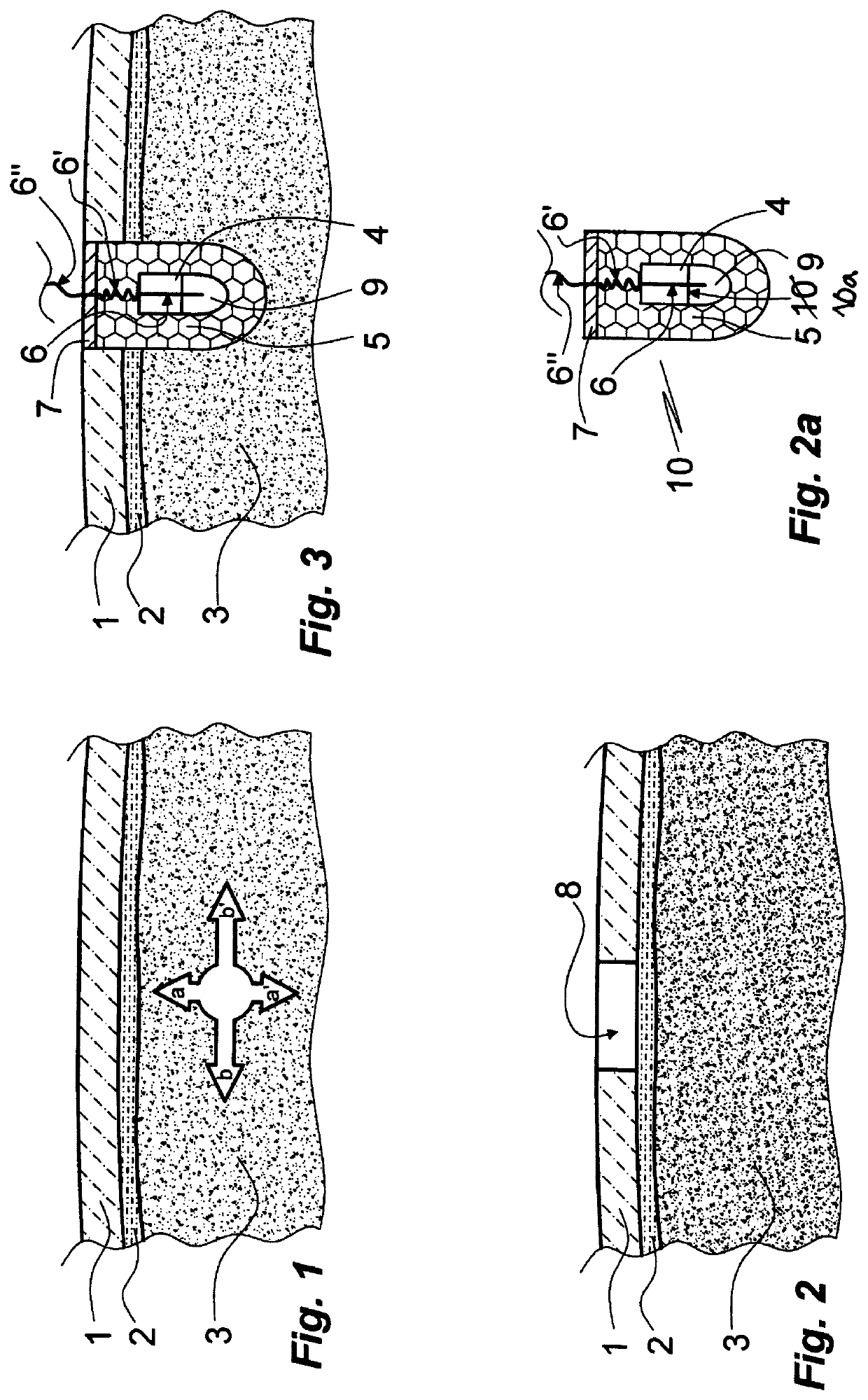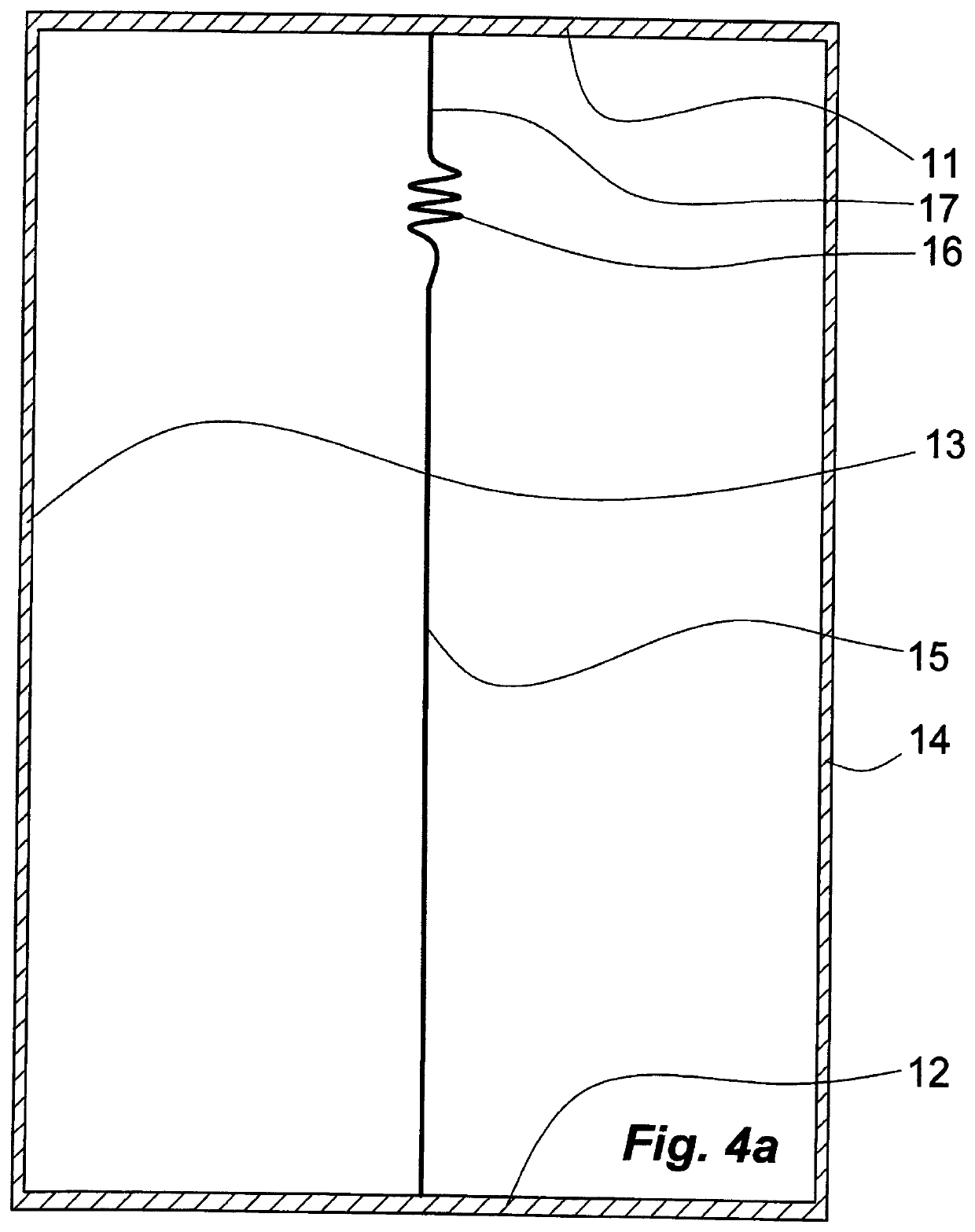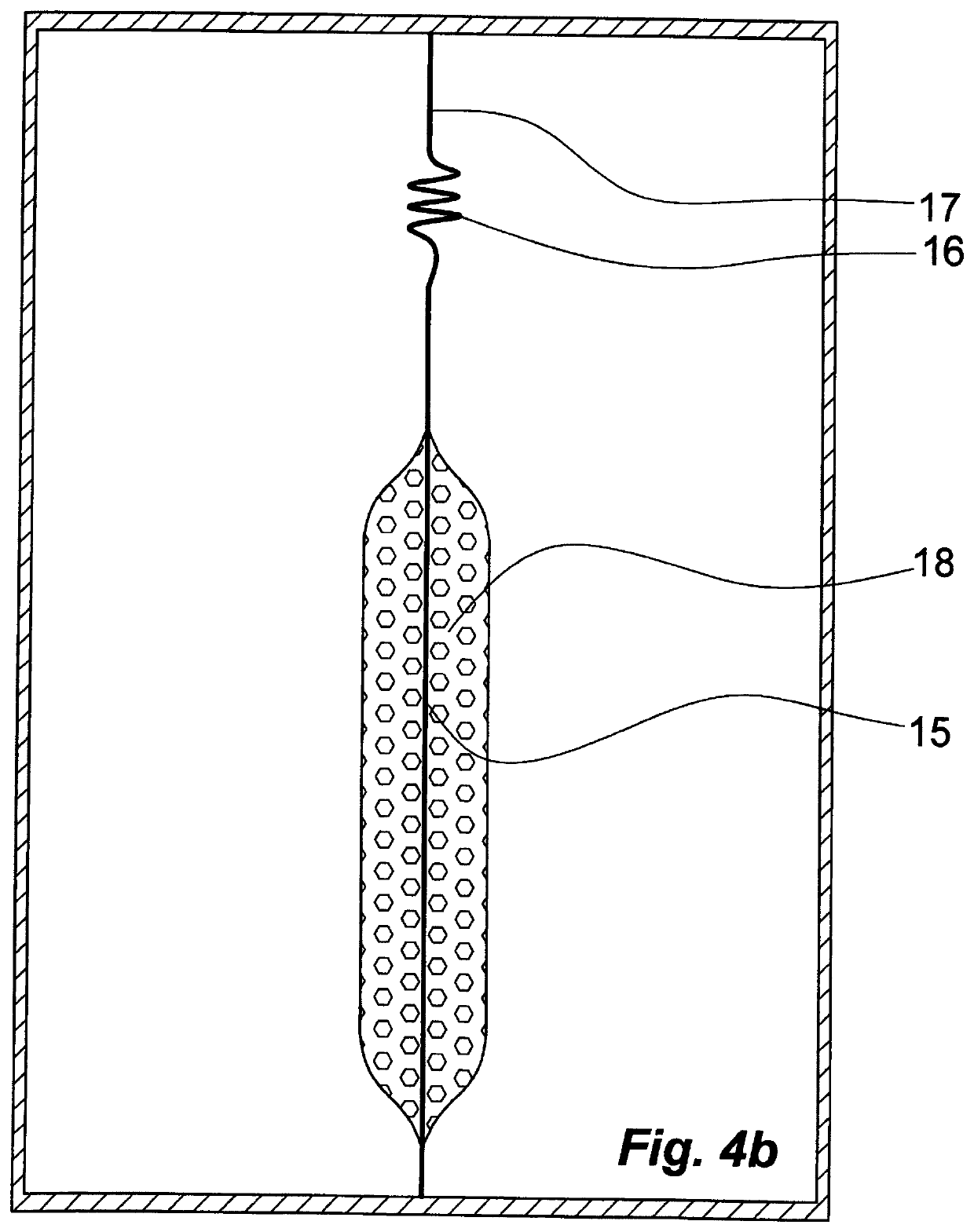Probe for implantation into nervous tissue comprising a microelectrode or a set of microelectrodes
a technology of nervous tissue and probe, which is applied in the field of probes, can solve the problems of persistent local inflammation, tissue injury, affecting the active, non-insulated portion of the implanted microelectrode, etc., and achieve the effect of avoiding or avoiding
- Summary
- Abstract
- Description
- Claims
- Application Information
AI Technical Summary
Benefits of technology
Problems solved by technology
Method used
Image
Examples
example 1
[0068]Implantation and tissue environment principles. FIGS. 1, 2, 2a and 3 illustrate schematically the implantation of a microelectrode probe into neural tissue. The neural tissue 3 here is brain tissue, protected by the skull bone 1 from which it is separated by a thin layer 2 comprising several sub-layers, such as the dura mater, the arachnoid mater, the pia mater and cerebrospinal fluid. The neural tissue 3 is prone to displacement in respect of the skull bone 1 by movements of the head, the displacement in a direction parallel with the skull bone 1 (arrows b, b′) generally being higher than in a perpendicular direction (arrows a, a′). Tissues intermediate between the skull bone 1 and brain tissue 3 are similarly displaced but not necessarily to the same extent.
[0069]Prior to implantation of a device according to the invention access to a desired position of the brain is provided by drilling a circular hole 8 in the skull (FIG. 2).
[0070]In the next step a device of the invention...
example 2
[0071]Manufacture of a microelectrode of the invention. For an understanding of the structure of a microelectrode probe of the invention and a microelectrode formed from it upon implantation the description of a process of its manufacture is helpful. Such a process is illustrated in FIGS. 4a through 4h or 4j.
[0072]At start (FIG. 4a) the ends of a metallic wire 15, 16, 17 are fastened at opposite sides 11, 12 of a rectangular frame 11, 12, 13, 14. The wire 15, 16, 17 comprises long and short straight terminal sections 15, 17 and a pre-bent intermediate coiled, zig-zag or meandered extendable section 16. Typically, the wire 15, 16, 17 has thickness of a few μm, such as from 1 μm to 20 μm, in particular from 2 μm to 12 μm. The wire 15, 16, 17 can be a single piece or comprise two or more sections of different compositions, such as of a first section 15 of platinum or iridium and a second section of 16, 17 of gold. Instead of a single wire 15, 16, 17 a bundle of ultra-thin wires of met...
example 3
[0089]FIG. 6a illustrates, in a simplified manner and in a perspective view, a microelectrode probe 40 of the invention comprising a distal chamber 46, 52 with cylindric 46 and hemispheric 52 sections, and a proximal chamber 47 of cylindrical form. The chambers 46, 52; 47 are separated by a radially extending wall 43. The microelectrode probe 40 is substantially rotationally symmetric in respect of a central axis C-C extending in a proximal / distal direction. The walls 44, 50; 45 (FIG. 6b), respectively, of the chambers 46, 52; 47 and the separating wall 43 are of a flexible polymer material, such as a Parylene C. The chambers 46, 52; 47 are filled with one or more of biocompatible carbohydrate material and biocompatible proteinaceous material, such as glucose and gelatin; for instance, the proximal chamber 47 and the cylindric portion 46 of the distal chamber 46, 52 are filled with carbohydrate material while the hemispheric portion 52 of the distal chamber 46, 52 is filled with gel...
PUM
 Login to View More
Login to View More Abstract
Description
Claims
Application Information
 Login to View More
Login to View More - R&D
- Intellectual Property
- Life Sciences
- Materials
- Tech Scout
- Unparalleled Data Quality
- Higher Quality Content
- 60% Fewer Hallucinations
Browse by: Latest US Patents, China's latest patents, Technical Efficacy Thesaurus, Application Domain, Technology Topic, Popular Technical Reports.
© 2025 PatSnap. All rights reserved.Legal|Privacy policy|Modern Slavery Act Transparency Statement|Sitemap|About US| Contact US: help@patsnap.com



